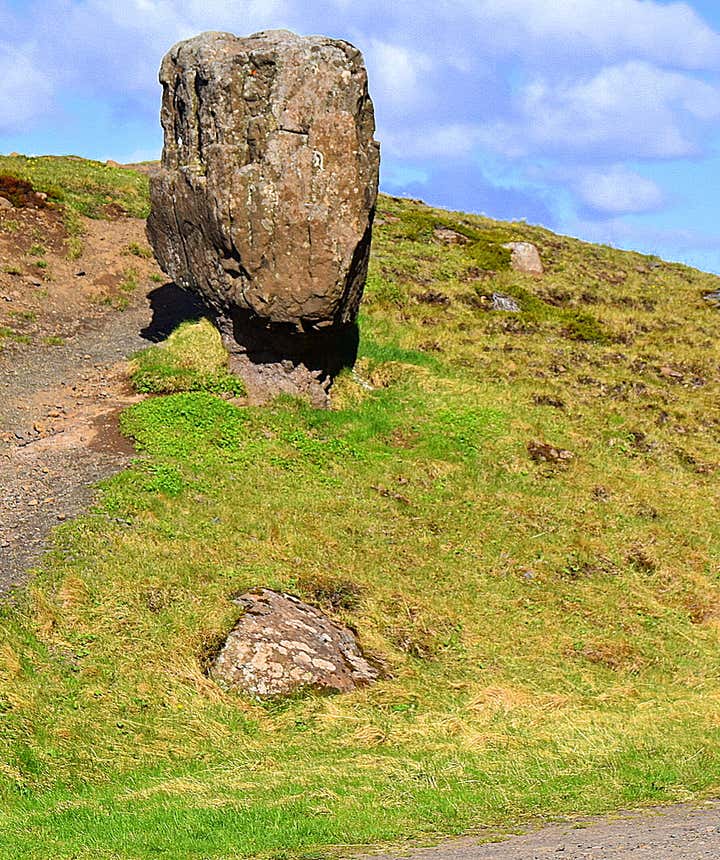
The Peculiar Rock, Steðji-Staupasteinn, in Hvalfjörður in Southwest Iceland
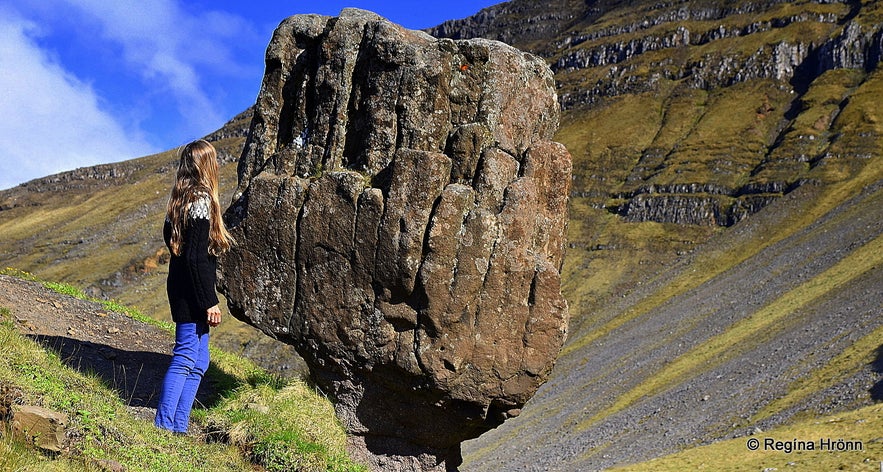
In the beautiful Hvalfjörður fjord in SW-Iceland, you will find a very peculiar almost 3 meters high rock called Steðji.
This rock is in the shape of a goblet and the hermit living in it is the Protector of the Hvalfjarðargöng tunnel.
Other names for Steðji are Staupasteinn, Prestur and Karlinn í Skeiðhóli - the Old man in Skeiðhóll hill.
Top photo: greeting the man in Staupasteinn
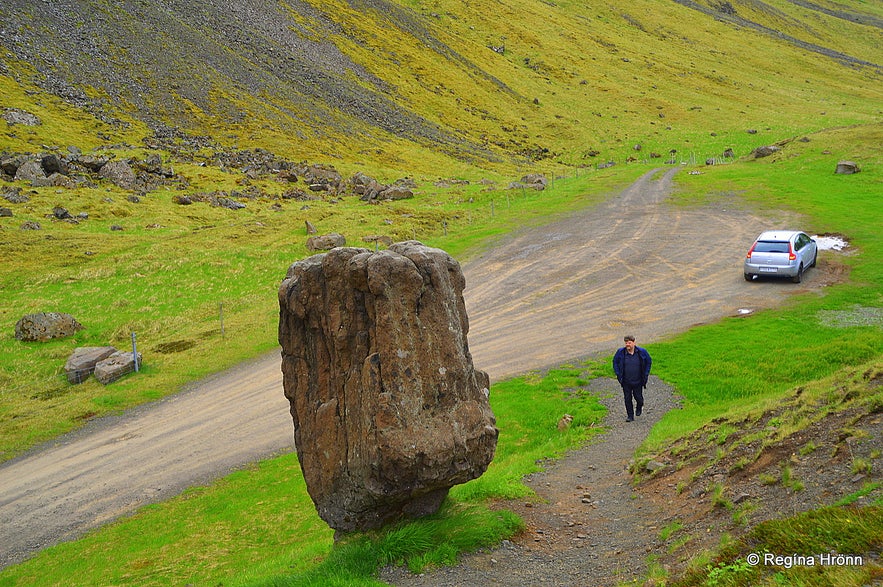 Staupasteinn and the parking space - the road is closed further on so you have to turn around.
Staupasteinn and the parking space - the road is closed further on so you have to turn around.
Before the Hvalfjarðargöng tunnel was opened in 1998 the road via Hvalfjörður was on the ring-road one route, and everybody travelling the ring-road had to pass through it.
Nowadays most people take the 5,770 meters long Hvalfjarðargöng tunnel and skip the beautiful Hvalfjörður as it shortens the route by 45 kilometres. Hvalfjarðarvegur road has now got road number 47.
My family, on the other hand, loves to drive through Hvalfjörður and we often make a stop by Staupasteinn on the south side of Hvalfjörður bay, to greet it.
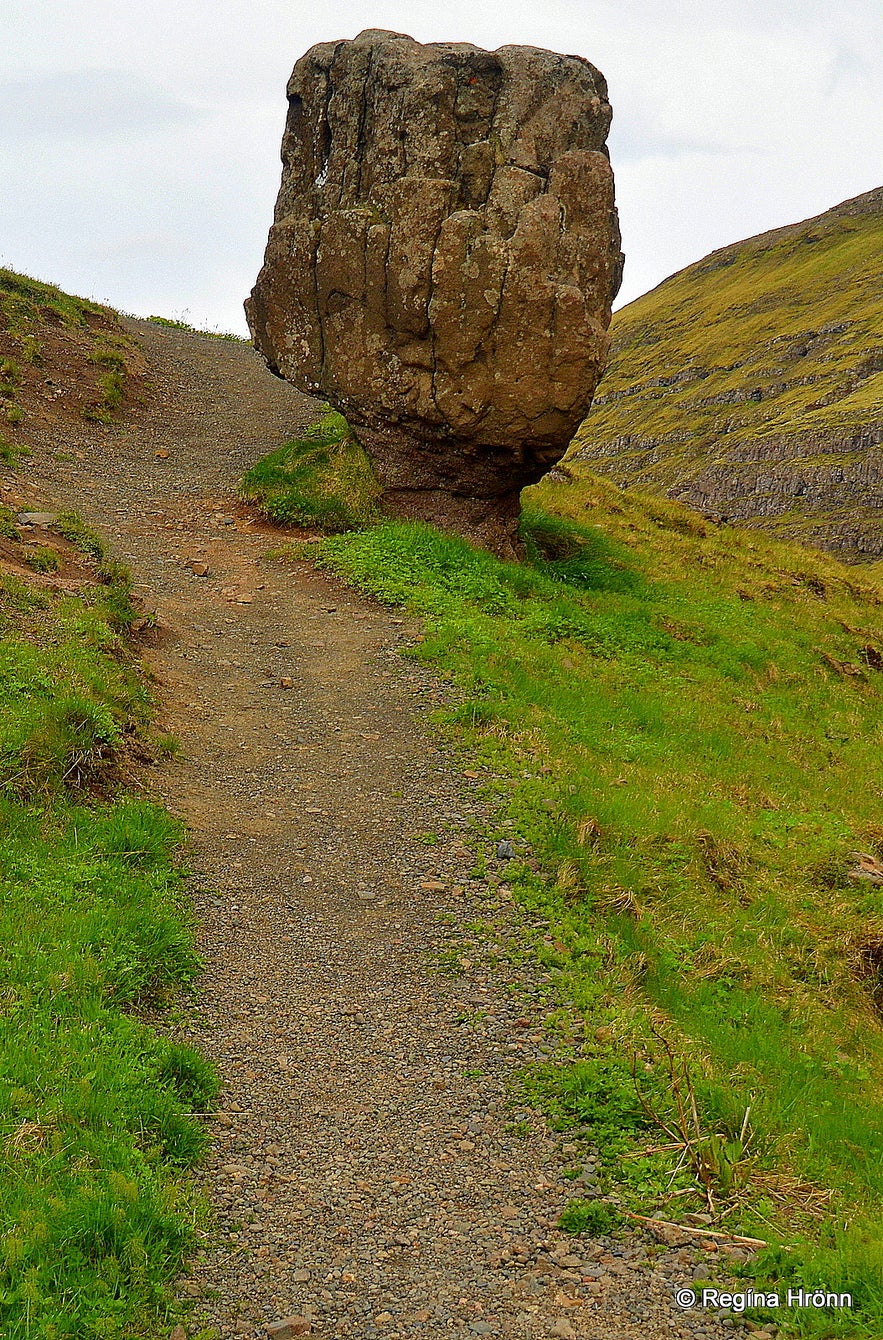
Staupasteinn rock
We always refer to it as Staupasteinn in my family, and that name seems to have been used for the longest time as my great-grandmother referred to Steðji as Staupasteinn.
It is a common belief that an Einbúi - a hermit lives in the rock and that his name is Staupa-Steinn like his habitation. As I have told you in many of my travel-blogs then the hidden people - the elves live in many, many rocks in Iceland and our folklore is filled with stories of the elves of Iceland.
See other elf-rocks, for example:
The Sheriff's Wife at Burstarfell and the Elf-Rock in East Iceland - Icelandic Folklore
Álfaborg - the City of the Elves in Borgarfjörður-Eystri in East Iceland - Icelandic Folklore
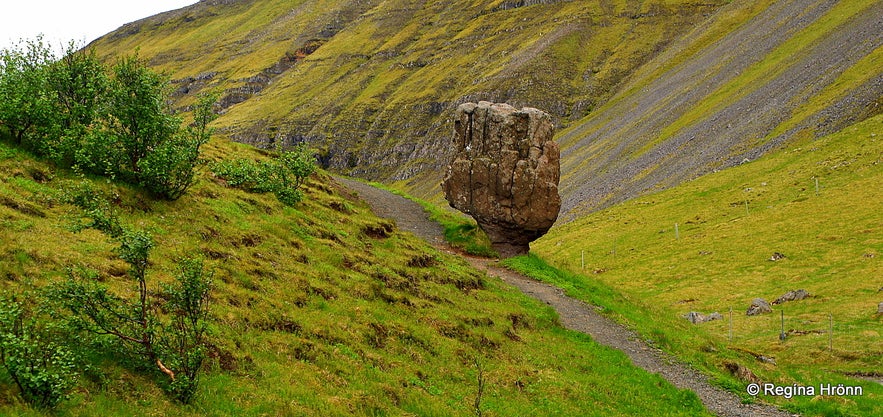
Staupasteinn rock
There are not many stories about a solitary man living in rocks though, but there are some and only 4 minute's away from my home in Reykjavík there is one such rock with a solitary man living in it.
Huldumannssteinn í Reykjavík - The Elf Rock in Reykjavík, the Capital City of Iceland
According to the late seer Erla Stefánsdóttir, the hermit in Staupasteinn/Steðji has been described as being a bearded, kindly man with long hair. He loves children and is humorous and kind.
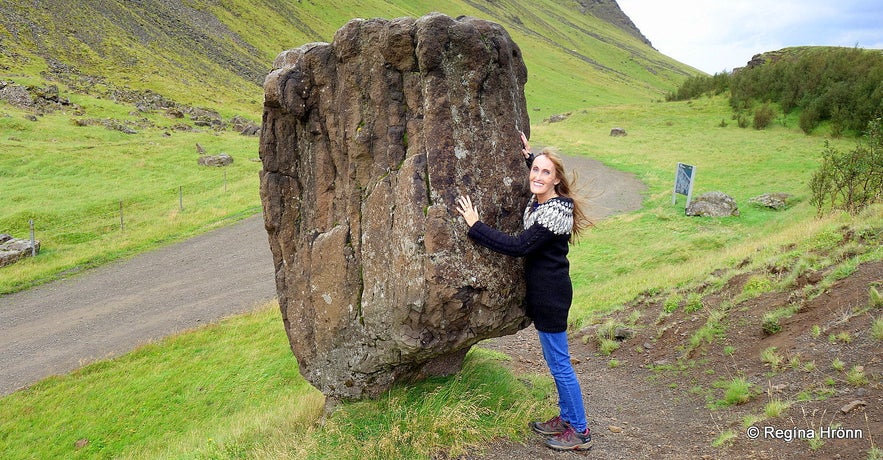
Greeting Staupasteinn in the fall of 2021
He loves visitors, especially children with balls and he loves to play with the children :)
Let us hope that this is true and that we are not disturbing him as there are many stories of the revenge of the elves when you are loud or disrespectful by their habitation. But seeing that the hermit lives alone then it sounds about right.
Let's always be respectful, though, and there is no climbing on Staupasteinn/Steðji.
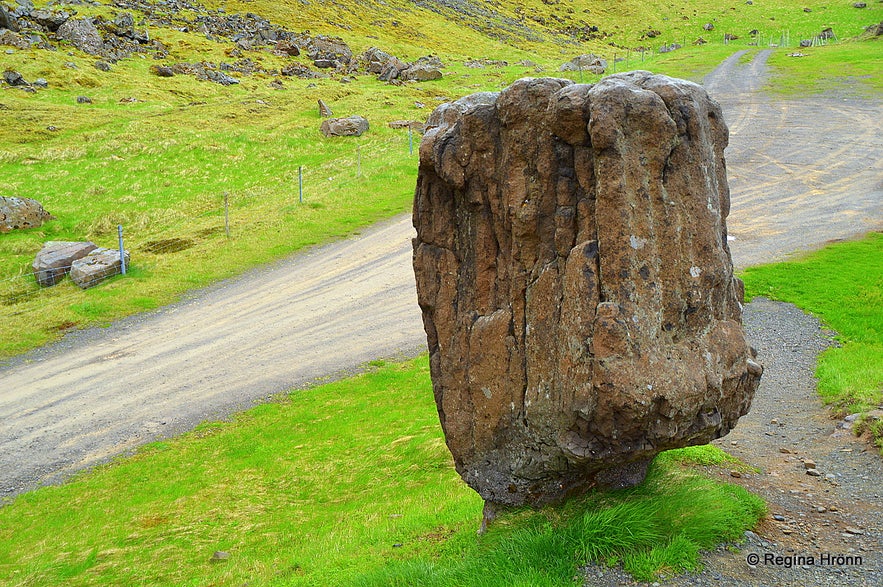
Staupasteinn rock
When the company Spölur was building Hvalfjarðargöng - the Whalebay Tunnel, they wanted to use the hermit in Staupasteinn as their protector in their promotional material. So back in 1997 Erla was asked to go to Hvalfjörður to talk to the hermit. The hermit was according to Erla flattered and agreed to be the protector of the tunnel :)
According to Umhverfisstofnun - the Environmental Agency of Iceland, Staupasteinn/Steðji is one of the rocks which came tumbling down the mountain Hvammsfjall/Reynivallaháls. The lower part of Staupasteinn/Steðji is made from reddish scoria, but the upper part is made of columnar basalt.
You will see many other smaller rocks that have come tumbling down the mountain.
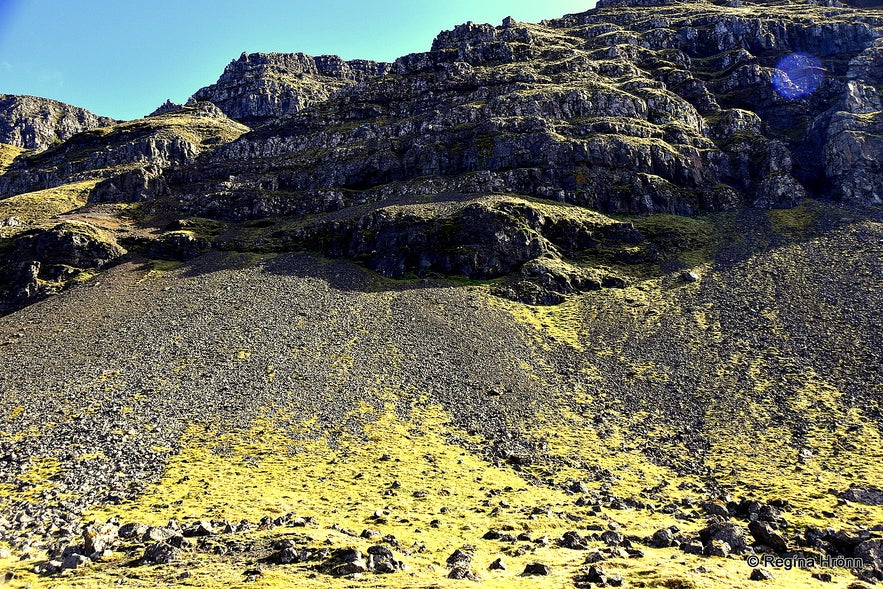 Hvammsfjall/Reynivallaháls
Hvammsfjall/Reynivallaháls
The shape of the rock is that of a chalice or hands praying. Some even see a baseball glove. It is truly a sight to behold.
The name Staupasteinn means Chalice Rock as it is in the shape of a goblet/chalice or stem glass.
We are lucky that Staupasteinn/Steðji still stands tall as my mother told me that the American soldiers wanted to remove it as they thought it would collapse onto ongoing traffic! They did not know about its history and the man living in it.
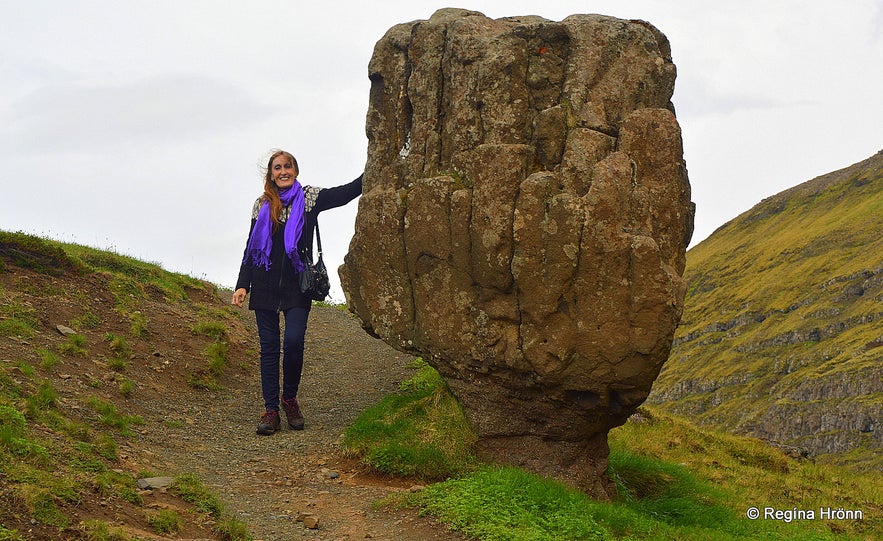 Greeting the hermit in Staupasteinn rock
Greeting the hermit in Staupasteinn rock
The rock and an area of 3.2 ha around it were preserved in 1974 as a natural monument, and should not be tampered with.
The old Hvalfjarðarvegur road used to pass by Staupasteinn/Steðji, but was moved around the year 1970 further down by the sea, so Staupasteinn/Steðji is hidden from sight and not by the road like it used to be when I was a little girl.
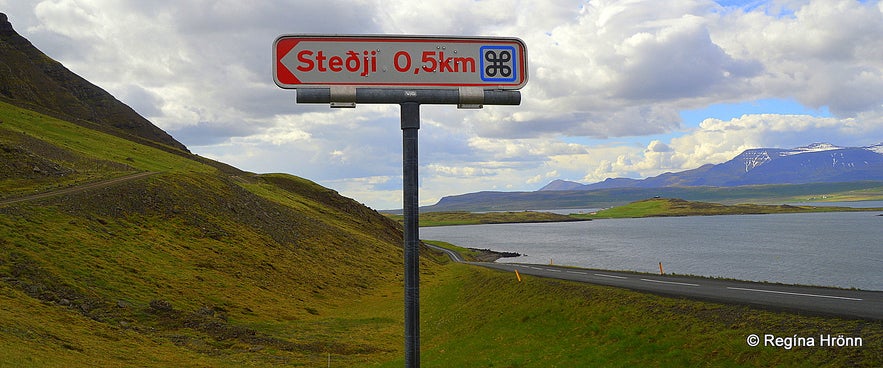 The sign leading to Staupasteinn/Steðji. Steðji means anvil.
The sign leading to Staupasteinn/Steðji. Steðji means anvil.
To visit Staupasteinn/Steðji, you have to make a turn by the Steðji sign, which is marked as a place of interest, and drive for 500 metres up the hill Skeiðhóll on a gravel road where Staupasteinn/Steðji stands tall.
The road is closed so you will have to turn around after visiting Staupasteinn/Steðji.
This is a lovely location to stop and have a picnic :) Let's, as always, leave no trace and only take photos. Umhverfisstofnun - the Icelandic Environmental Agency also wants to reiterate that there is no camping by the rock.
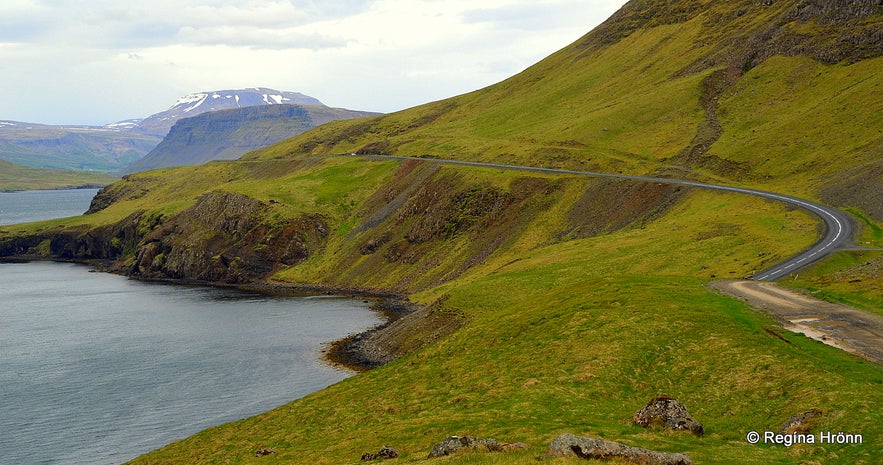 The view from Skeiðhóll hill - in the photo it looks like the gravel road and the asphalt road meet each other in this spot
The view from Skeiðhóll hill - in the photo it looks like the gravel road and the asphalt road meet each other in this spot
There is an excellent view from Skeiðhóll of Hvalfjörður and Hvammsvík cove. Down by Skeiðhóll and towards the sea, you will find Skeiðarhólsflöt.
According to folklore, this green area should never be mowed. At one point the farmer of Hvammur farm harvested this area and lost his cow the following winter. Source: Fornleifaskráning í Kjósarhreppi.
There are many such "álagablettir" - enchanted spots in Icelandic folklore, which should never be mowed or misfortune will happen. And very often you would lose your cow if you disobeyed. Or another disaster would happen.
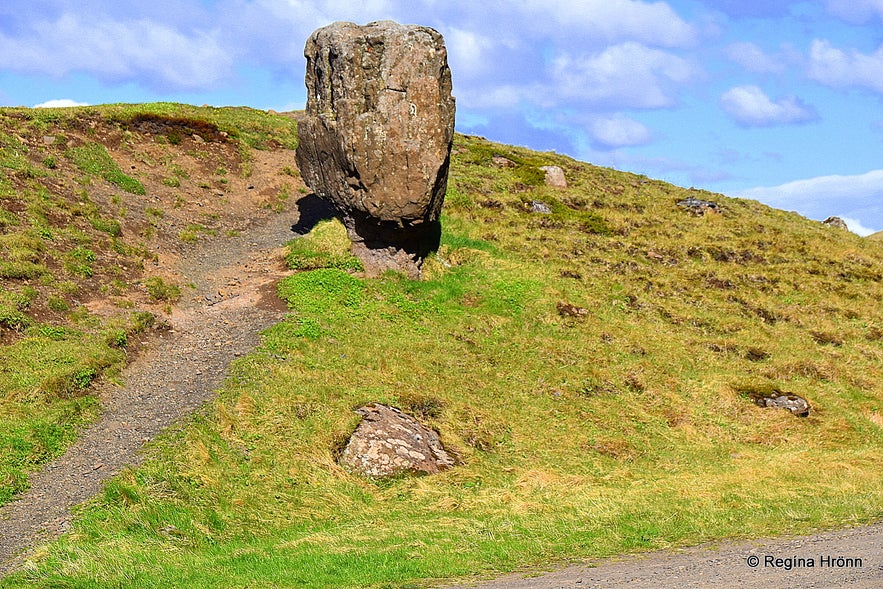
Staupasteinn rock
All around Iceland, you can find areas where the grass has never been mowed. They are either elf locations or there could even have been burial mounds there which should never be tampered with.
See also my travel-blog: A Compilation of the Viking Ruins & Pagan Burial Mounds I have visited on my Travels around Iceland.
To visit this area you can rent a car in Reykjavík - Hvalfjörður is a beautiful fjord to visit. Have a lovely time!
Sources:
他おすすめのブログ
ブルーラグーン - Blue Lagoon
まずブルーラグーンという世界的に有名なスパについて紹介したいと思います。アイスランドの首都から車で30分のところにあるとても綺麗な温泉施設です。わき水のほかにアイスランドには地熱発電施設がたくさんあり、そこからの温水を利用しています。 でも、Blue Lagoonの魅力はそれだけではありません。ラグーンのミネラルの多くは、あなたの肌のに非常に良いです。例えば、シリカを顔に付けたら、肌がとてもっと読むIcelandic Nature - アイスランドの自然
アイスランドの自然 多くの観光客が自然を見るためにアイスランドに来ると思います。自然は汚くなくて、とても綺麗です。アイスランドの自然はほとんど、昔のままであると思います。 アイスランドの自然でいろいろなアクティビティができます。自分が一番好きなアクティビティは山のハイキングです。夏によく家族とハイキングトリップに行きます。普通に15-20人のグループと行って、みんなとキャビンで泊まります。もっと読むアイスランドの魚料理
アイスランドの魚料理。 アイスランドの経済の最も重要な業種は観光と漁業です。従ってアイスランド人は魚料理がとても好きです。それは魚が新鮮だからだと思います。日本の魚料理と違うのは作り方だと思う、生で食べるよりアイスランド人が普通に魚を焼く。でも日本みたいに全体調理しなくて、アイスランド人が魚を一人分のサイズに切って調理するんです。 魚料理と釣りが好きなら、アイスランドに来たらとてもいもっと読む

アイスランド最大の旅行アプリをスマートフォンにダウンロード。旅のすべてを1か所で管理できます。
アイスランド最大の旅行マーケットプレイスをポケットに。スマートフォンのカメラでQRコードを読み取り、表示されるリンクをクリックしてください。電話番号またはメールアドレスを入力すれば、SMSやEメールでもダウンロードリンクを受け取ることができます。
















